11 Korean-Style Breakfast Ideas That’ll Make You Jump Out of Bed
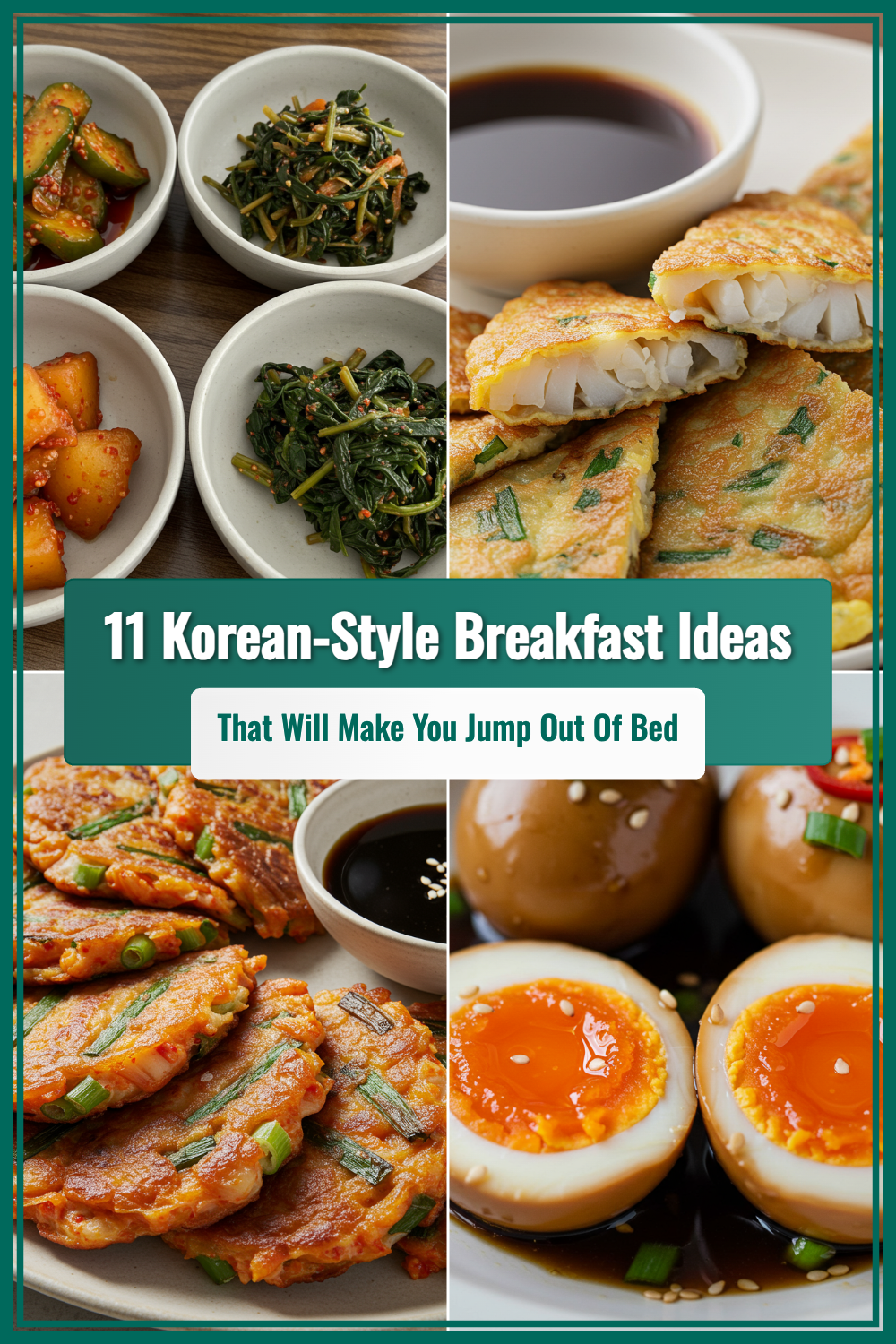
Looking for a fresh, healthy, and utterly satisfying way to kick off your morning? Korean-style breakfast ideas are taking the world by storm, and for good reason. Packed with flavor, nutrients, and variety, a Korean breakfast isn’t just a meal—it’s an experience. Whether you’re tired of the same old cereal or want to eat like a K-drama star, these Korean breakfast recipes will give your mornings a delicious makeover. Ready to discover your new favorite way to start the day? Let’s dig in!
The Science-Backed Benefits of a Korean-Style Breakfast
Before we dive into the recipes, let’s see why Korean breakfasts are so good for you. Here’s what studies say:
“Eating a rice-based Korean breakfast lowers body fat and boosts cognitive function in teens, compared to bread or skipping breakfast.”
“Traditional Korean breakfasts with rice and three or more side dishes provide better nutrition and lower the risk of obesity and metabolic syndrome than skipping breakfast or eating bread.”
Health Benefits of Korean-Style Breakfasts
| Benefit | Study/Source | Key Finding |
|---|---|---|
| Lower body fat in teens | Rice-based Korean breakfast reduced BMI and body fat compared to bread. | |
| Improved cognitive function | Teens eating Korean breakfast had better attention and less stress. | |
| Better overall nutrition | Rice + 3+ side dishes = highest vitamin and mineral intake. | |
| Lower risk of metabolic syndrome | Traditional Korean breakfast linked to lower risk than bread/no breakfast. | |
| Gut health from fermented foods | Kimchi and other fermented foods aid digestion and immunity. | |
| Sustained energy and easy digestion | Porridge and balanced meals keep you full and energized. |
1. Gyeran Bap (Korean Egg Rice Bowl)
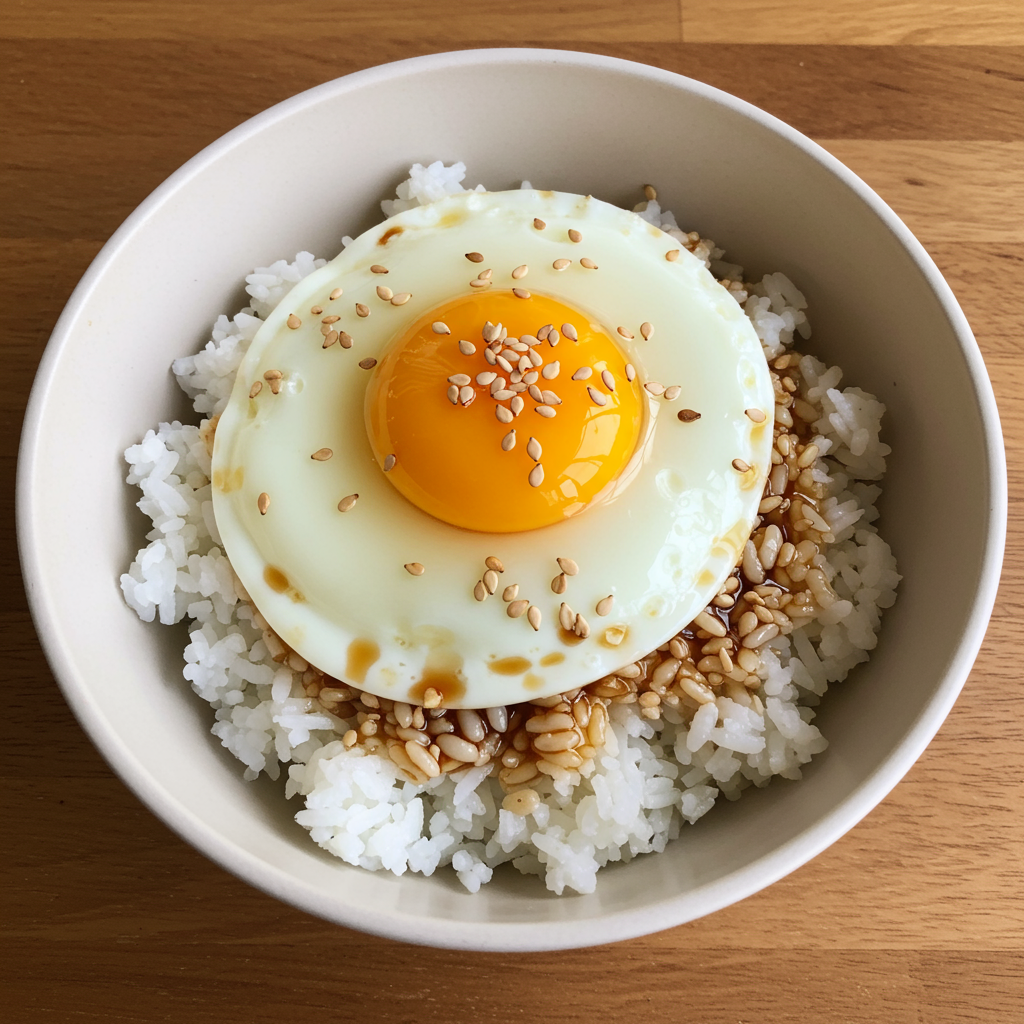
Gyeran bap is a classic Korean breakfast that’s as quick as it is comforting. It’s basically a warm bowl of rice topped with a soft fried egg, soy sauce, and sesame oil. This dish is a lifesaver on busy mornings and is loved by kids and adults alike.
Ingredients:
- 1 egg
- 1 serving cooked white rice (warm)
- 1/2 tbsp oil
- 1/2 tbsp butter (optional)
- 2 tsp soy sauce (low sodium preferred)
- 2 tsp sesame oil
- 2 tsp toasted sesame seeds
Instructions:
- Heat oil in a skillet over medium heat. Fry the egg to your liking (sunny-side-up is traditional).
- Place warm rice in a bowl. Add a sliver of butter if you like it creamy.
- Top with the fried egg.
- Drizzle with soy sauce and sesame oil.
- Sprinkle with sesame seeds.
- Mix everything together before eating. Serve with kimchi for a true Korean touch.
Pro Tip: Add sliced avocado, roasted seaweed, or a spoonful of kimchi for extra flavor!
2. Dakjuk (Korean Chicken Rice Porridge)
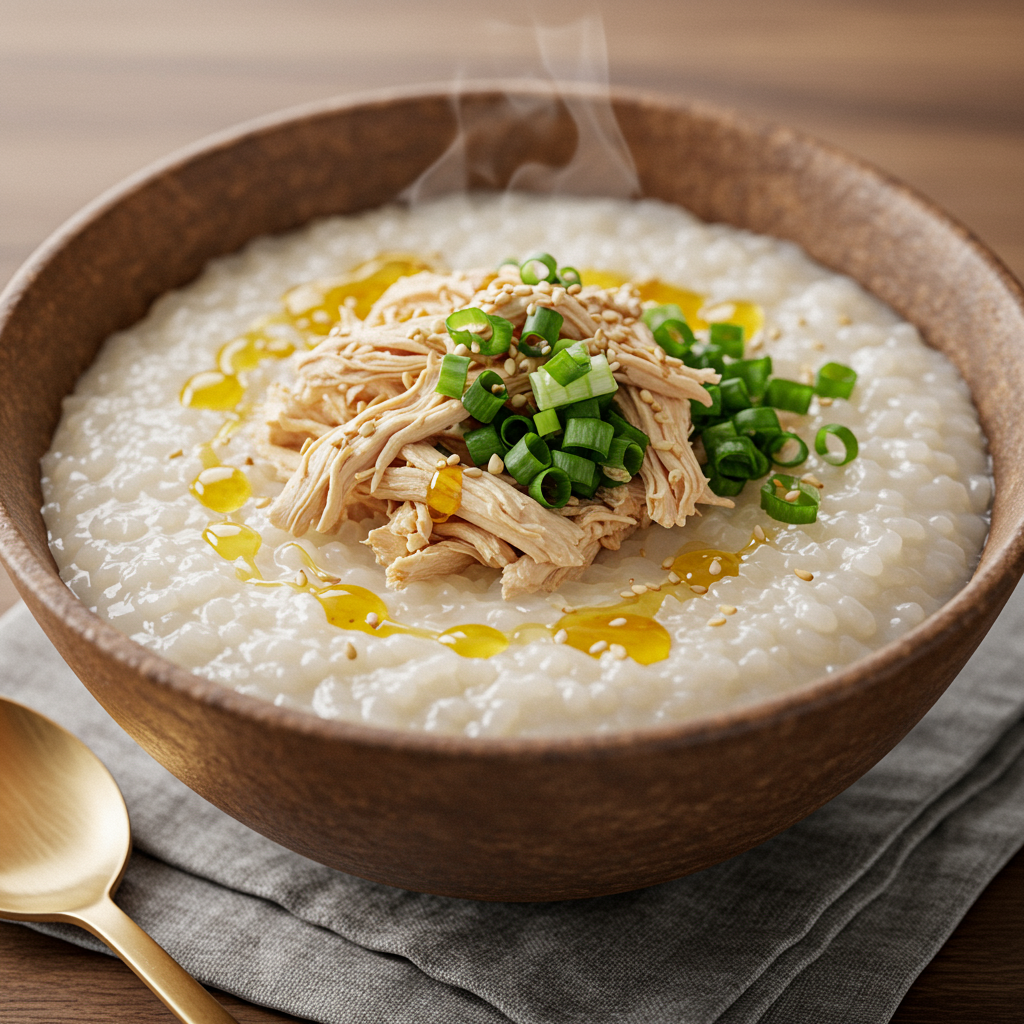
Dakjuk is a soothing rice porridge made with chicken and veggies. It’s easy on the tummy and perfect for chilly mornings or when you need something gentle but filling.
Ingredients:
- 1/2 cup short-grain rice, rinsed
- 4 cups chicken stock
- 1 chicken breast, shredded
- 2 cloves garlic, minced
- 1/2 carrot, diced
- 2 green onions, chopped
- Salt and pepper to taste
- Toasted sesame oil (for garnish)
Instructions:
- In a pot, combine rice and chicken stock. Bring to a boil, then simmer.
- Add garlic and carrot. Cook until rice is soft and porridge-like (about 30 minutes).
- Add shredded chicken and green onions. Season with salt and pepper.
- Drizzle with toasted sesame oil before serving.
Pro Tip: Swap chicken for tofu or mushrooms for a vegetarian version.
3. Kimchi Bokkeumbap (Kimchi Fried Rice)
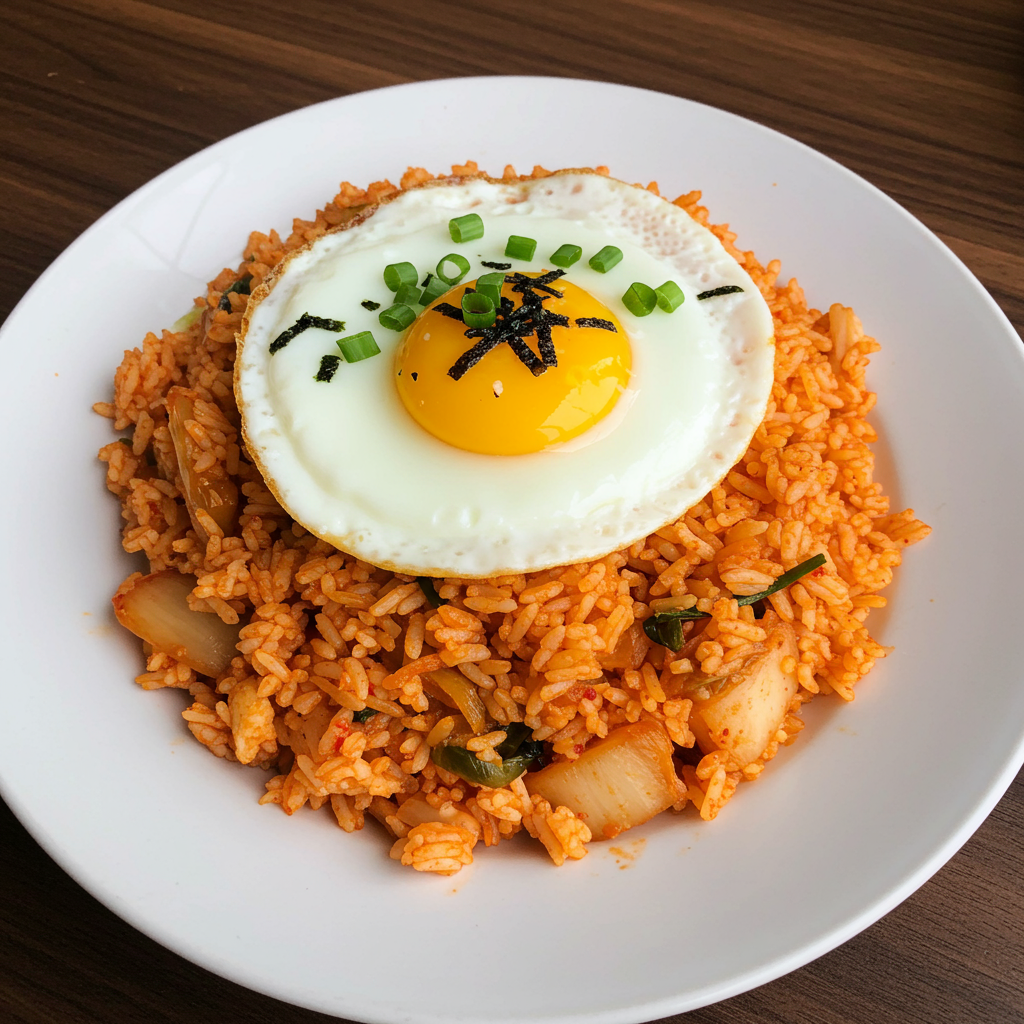
Kimchi fried rice is a spicy, tangy, and savory way to use up leftover rice and kimchi. It’s fast, filling, and totally customizable.
Ingredients:
- 1 cup cooked rice (cold works best)
- 1/2 cup kimchi, chopped
- 1/4 onion, diced
- 1 egg
- 1 tbsp gochujang (Korean chili paste)
- 1 tbsp soy sauce
- 1 green onion, chopped
- 1 tbsp sesame oil
- 1 tbsp vegetable oil
Instructions:
- Heat vegetable oil in a pan. Add onion and cook until soft.
- Add kimchi and cook for 2 minutes.
- Add rice, gochujang, and soy sauce. Stir-fry until everything is combined and heated through.
- Push rice to one side, crack in the egg, and scramble. Mix into the rice.
- Drizzle with sesame oil and top with green onions.
Pro Tip: Top with a fried egg and seaweed flakes for extra yum!
4. Hobak Buchim (Zucchini Pancakes)
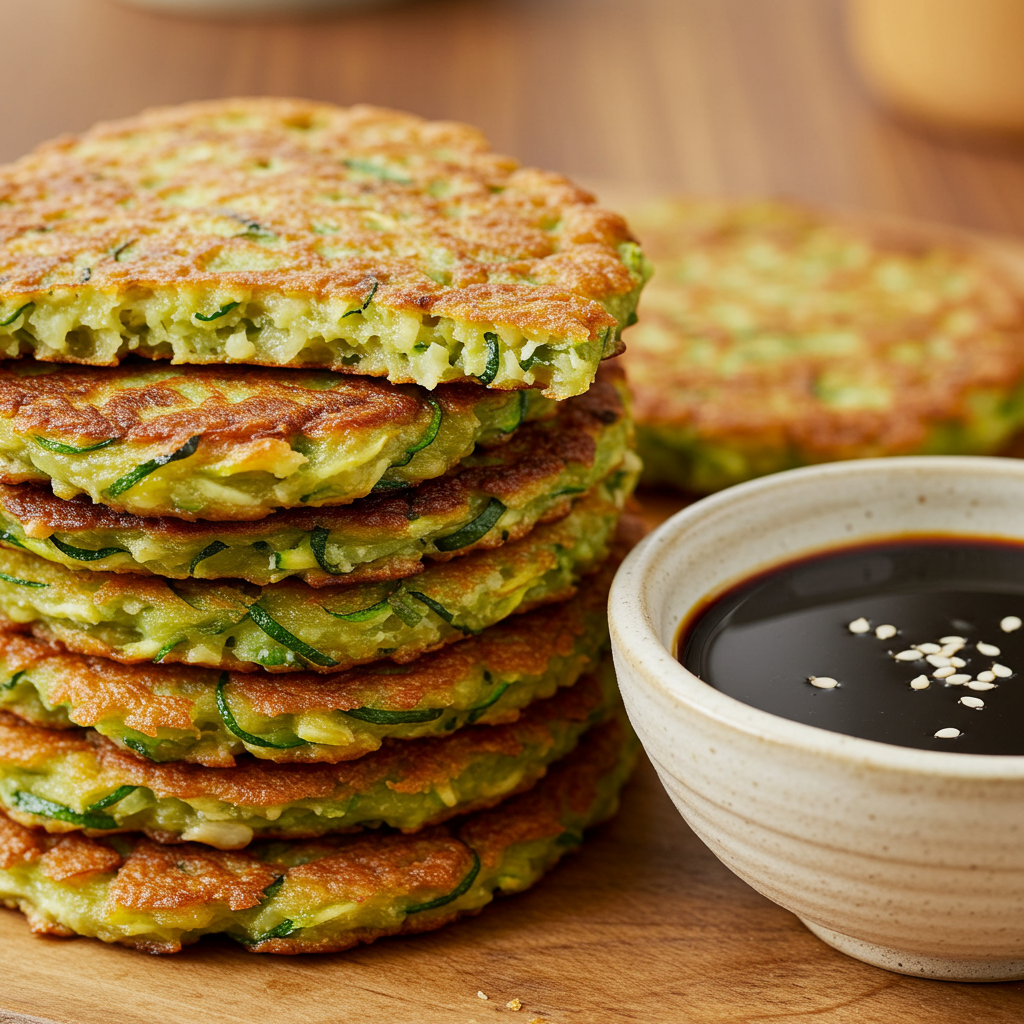
These savory pancakes are light, crispy, and packed with veggies. They’re a favorite Korean breakfast or snack, especially for vegetarians.
Ingredients:
- 1 medium zucchini, grated
- 1/4 onion, finely chopped
- 1/2 cup flour
- 1 egg
- 1/4 tsp salt
- 1/4 cup water
- Vegetable oil for frying
Instructions:
- Squeeze excess water from grated zucchini.
- Mix zucchini, onion, flour, egg, salt, and water in a bowl.
- Heat oil in a skillet. Spoon batter to form small pancakes.
- Cook until golden on both sides (about 2-3 minutes per side).
- Serve with soy dipping sauce.
Pro Tip: Add chopped carrots or bell peppers for color and crunch.
5. Gyeran Mari (Korean Rolled Omelet)
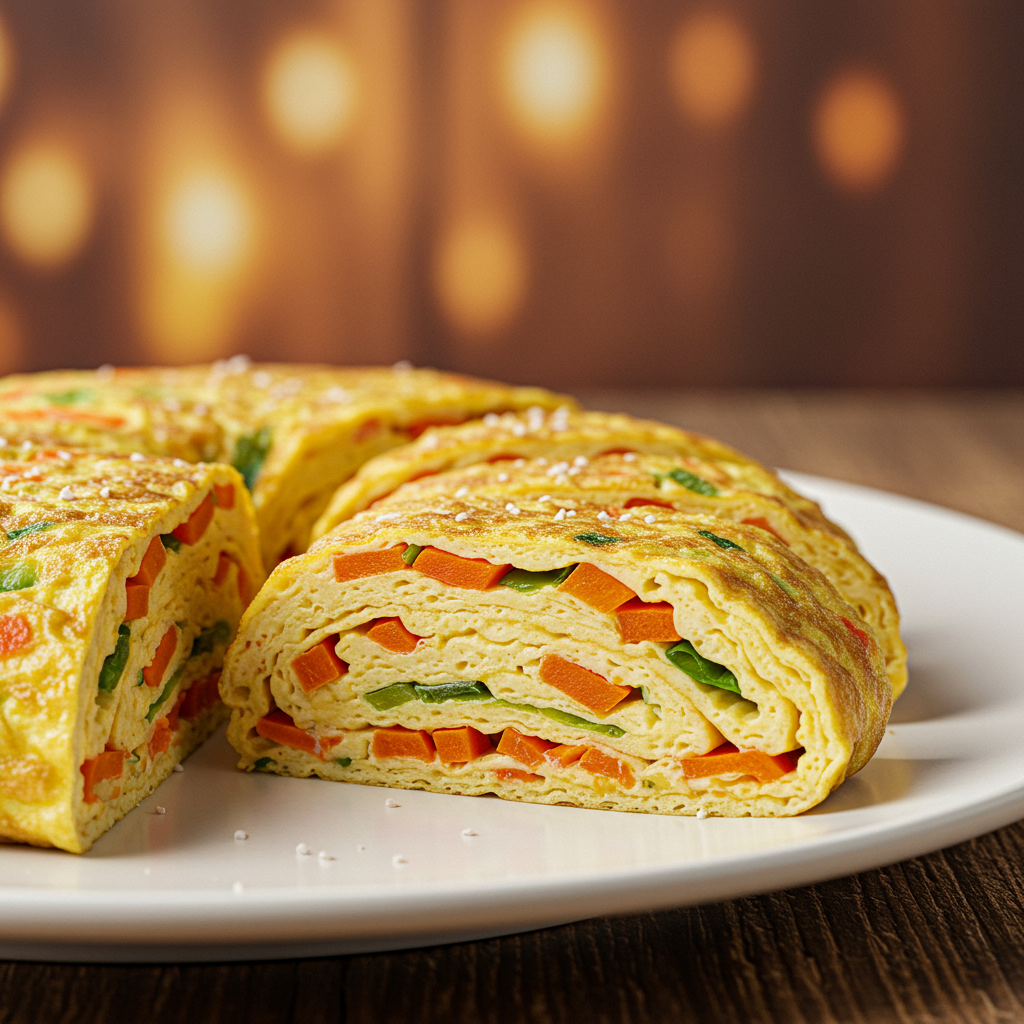
Gyeran mari is a rolled omelet filled with veggies. It’s pretty, protein-packed, and makes breakfast feel special.
Ingredients:
- 3 eggs
- 1/4 carrot, finely diced
- 2 green onions, chopped
- 1/4 bell pepper, diced
- 1/4 tsp salt
- 1 tsp oil
Instructions:
- Beat eggs with salt. Stir in veggies.
- Heat oil in a non-stick pan over medium-low.
- Pour a thin layer of egg mixture. When set, roll to one side.
- Pour more egg, lift the roll so new egg flows underneath. Repeat until all egg is used.
- Slice into rounds and serve.
Pro Tip: Use a square pan for perfect rolls, but a round pan works too!
6. Mayak Eggs (Korean Marinated Eggs)
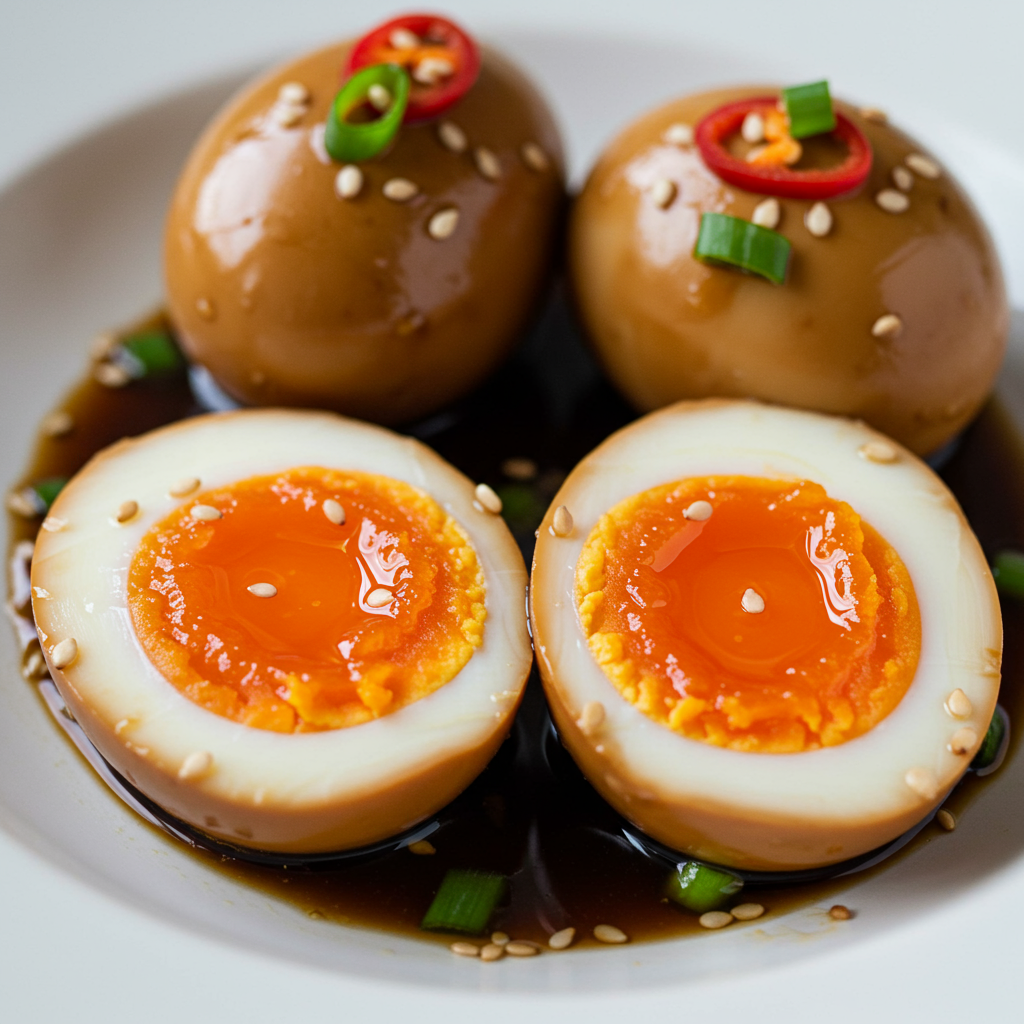
These soy-marinated eggs are jammy, savory, and addictive. They’re great with rice, toast, or even as a snack.
Ingredients:
- 6 eggs
- 1/2 cup soy sauce
- 1/2 cup water
- 2 tbsp honey or sugar
- 2 tbsp sesame oil
- 2 green onions, chopped
- 1 chili pepper, sliced (optional)
- 1 tbsp sesame seeds
Instructions:
- Boil eggs for 6-7 minutes. Cool and peel.
- Mix soy sauce, water, honey, sesame oil, green onions, chili, and sesame seeds.
- Place eggs in a container. Pour marinade over eggs.
- Chill for at least 4 hours (overnight is best).
- Slice eggs and serve over rice.
Pro Tip: These keep in the fridge for up to 3 days—perfect for meal prep!
7. Juk (Korean Rice Porridge)
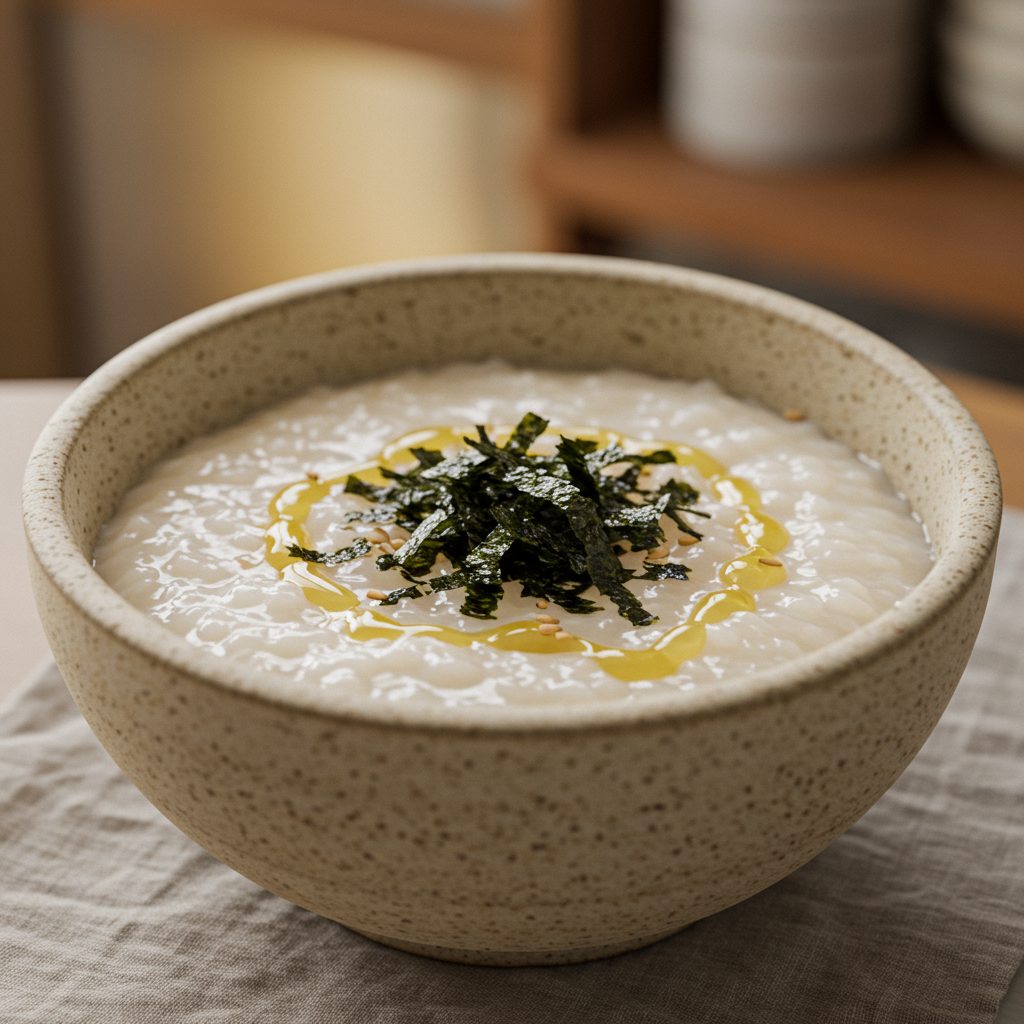
Juk is a gentle, creamy porridge made with rice and sometimes beans, pumpkin, or abalone. It’s a go-to breakfast for anyone needing something easy to digest.
Ingredients:
- 1/2 cup short-grain rice, rinsed
- 4 cups water or broth
- Salt to taste
Optional Add-ins:
- Pumpkin puree
- Red beans
- Mushrooms
- Chicken
Instructions:
- Combine rice and water/broth in a pot. Bring to a boil.
- Lower heat and simmer, stirring often, until rice is soft and porridge-like (30-40 minutes).
- Add salt and any extras you like.
- Serve warm.
Pro Tip: Top with roasted seaweed, sesame seeds, or a drizzle of sesame oil.
8. Kimchi Jeon (Kimchi Pancakes)
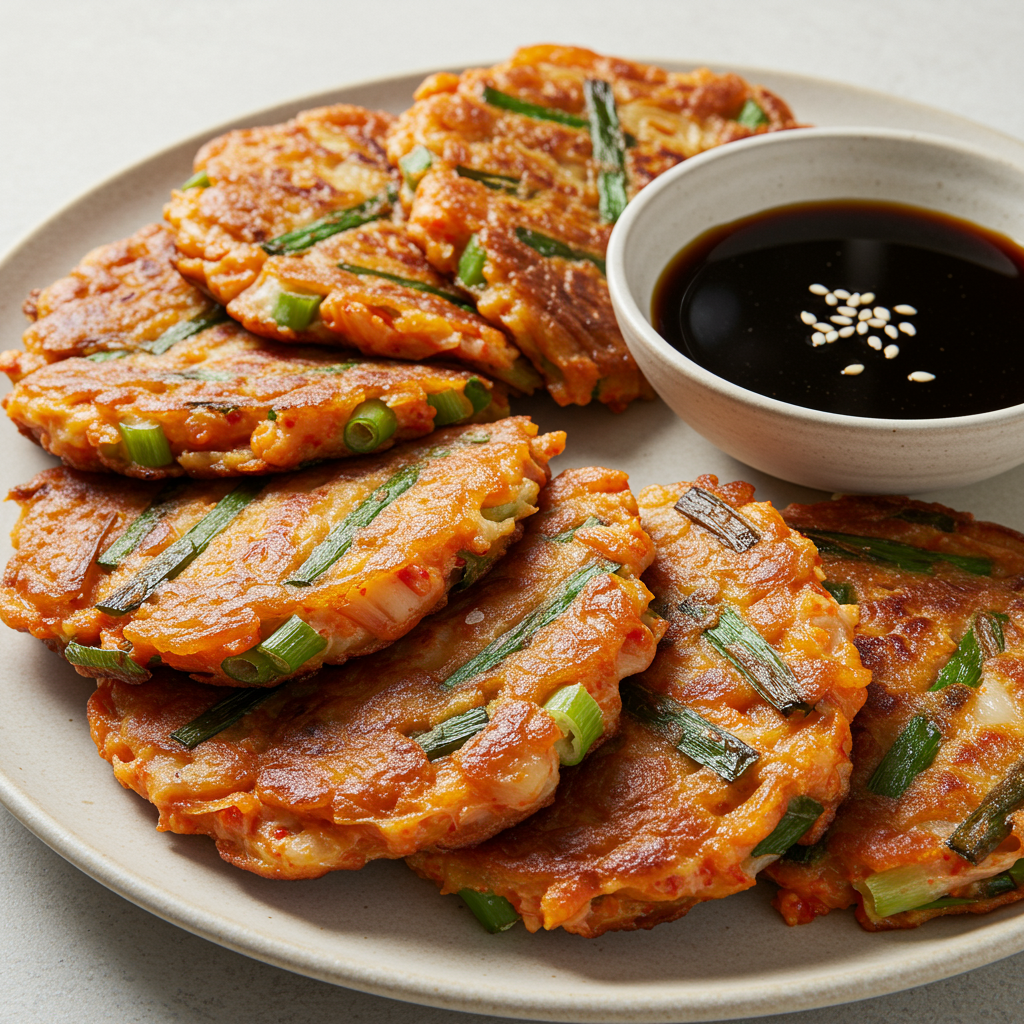
Kimchi jeon are crispy, savory pancakes with a spicy kick. They’re easy, quick, and a great way to use up old kimchi.
Ingredients:
- 1 cup chopped kimchi
- 1/2 cup flour
- 1/4 cup water
- 1 egg
- 1 green onion, chopped
- Vegetable oil for frying
Instructions:
- Mix kimchi, flour, water, egg, and green onion in a bowl.
- Heat oil in a skillet. Pour batter to form pancakes.
- Fry until golden and crispy, about 2-3 minutes per side.
- Serve with soy dipping sauce.
Pro Tip: For a vegan version, skip the egg and use extra water.
9. Daegujeon (Fish Pancakes)
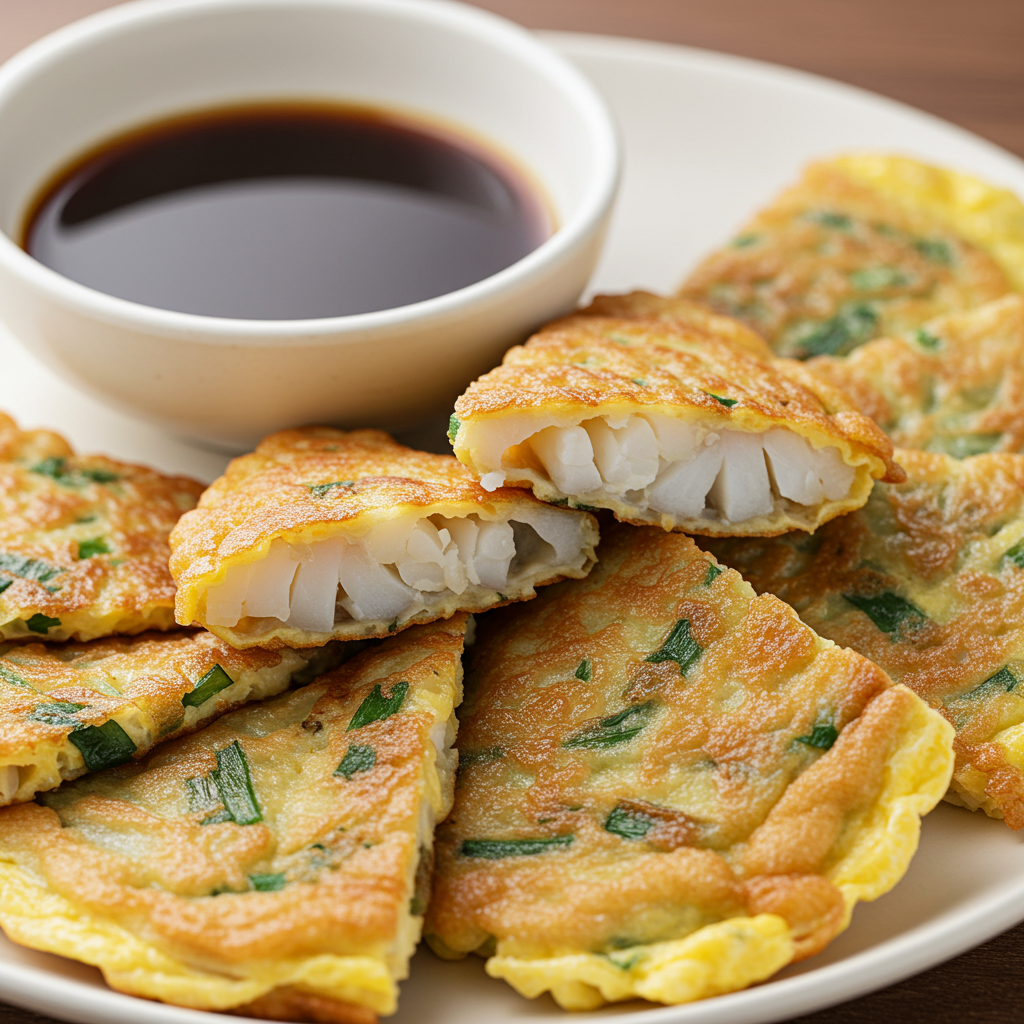
These protein-packed fish pancakes are made with cod, egg, and a light flour coating. They’re perfect for a hearty breakfast or brunch.
Ingredients:
- 8 oz cod fillet, sliced
- 1/2 tsp salt
- 1/4 tsp garlic powder
- Pinch black pepper
- 1/4 cup flour
- 1 egg
- 1 tbsp oil
Instructions:
- Pat cod dry. Slice into pieces and season with salt, pepper, and garlic powder.
- Coat each slice in flour.
- Dip in beaten egg.
- Fry in oil over medium-low heat until golden (2-3 minutes per side).
- Serve hot with soy dipping sauce.
Pro Tip: Try with a side of rice and kimchi for a complete meal.
10. Kimbap (Korean Seaweed Rice Rolls)
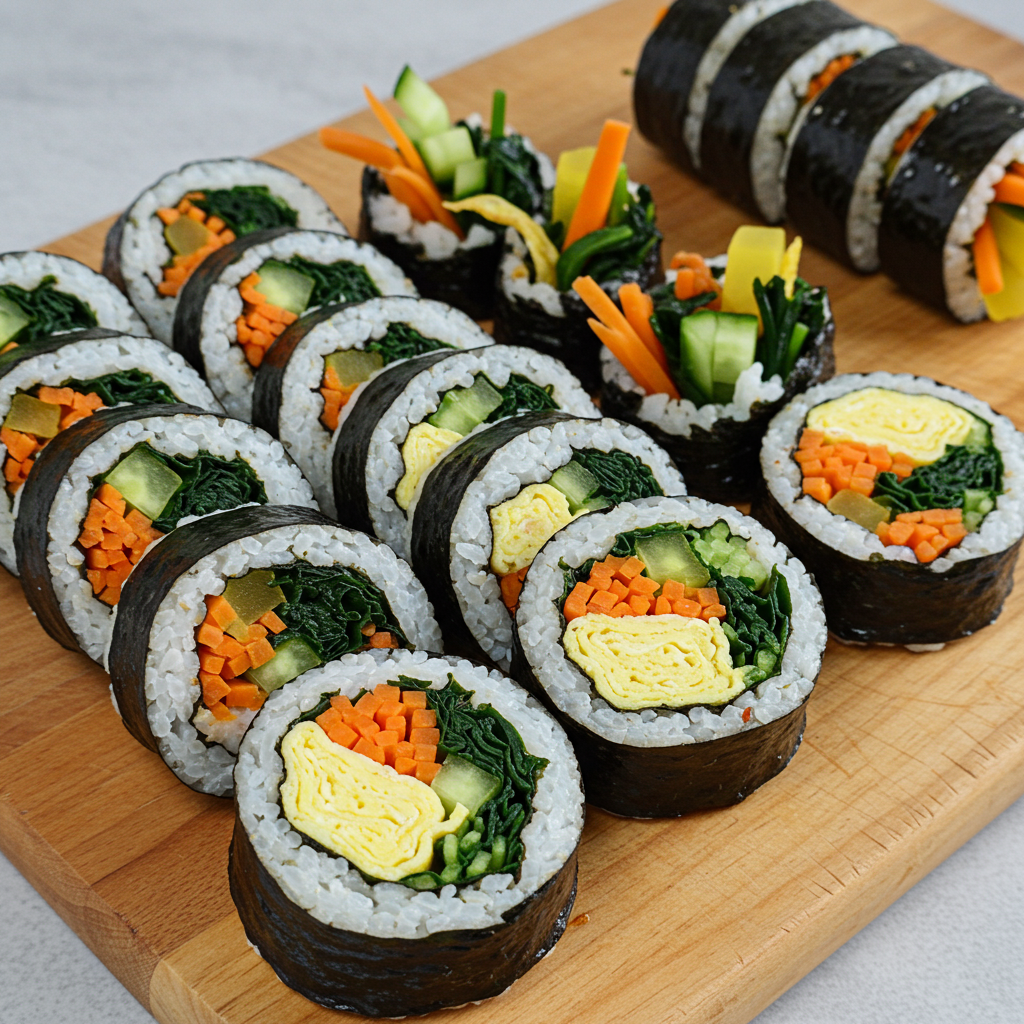
Kimbap is like Korean sushi—rice and fillings rolled in seaweed. It’s portable, fun to make, and totally customizable.
Ingredients:
- 2 cups cooked rice
- 2 tbsp sesame oil
- 1/2 tsp salt
- 4 sheets roasted seaweed (gim)
- 1/2 cucumber, julienned
- 1/2 carrot, julienned
- 2 eggs, beaten and cooked into a thin omelet, sliced
- 4-6 strips cooked spinach
- 4-6 strips cooked fish cake (optional)
Instructions:
- Mix rice with sesame oil and salt.
- Lay seaweed on a bamboo mat. Spread rice thinly, leaving 1 inch at top.
- Arrange fillings in rows.
- Roll tightly, slice, and serve.
Pro Tip: Wet your knife for clean cuts!
11. Banchan (Korean Side Dishes) for Breakfast

No Korean breakfast is complete without banchan—small side dishes that add flavor and variety. Here are a few easy, vegetarian-friendly options:
- Oi Muchim (Spicy Cucumber Salad): Sliced cucumber tossed with garlic, chili flakes, vinegar, and sesame oil.
- Gamja Jorim (Braised Potatoes): Potatoes simmered in soy sauce, sugar, and garlic until tender.
- Dubu Jorim (Braised Tofu): Pan-fried tofu braised in soy sauce, garlic, and green onions.
- Namul (Seasoned Veggies): Lightly blanched spinach, bean sprouts, or fernbrake seasoned with sesame oil and garlic.
Pro Tip: Make a few banchan ahead of time and keep them in the fridge for quick breakfasts all week.
Frequently Asked Questions (FAQ) About Korean-Style Breakfasts
1. Are Korean breakfasts always savory?
Most traditional Korean breakfasts are savory, featuring rice, soup, and veggies, but sweet options like pumpkin porridge (hobakjuk) and sweet potatoes are also common.
2. Can I make Korean breakfast vegetarian or vegan?
Absolutely! Many dishes like juk, kimchi pancakes, and banchan are naturally plant-based or can be easily adapted.
3. Is it healthy to eat rice for breakfast?
Yes! Studies show that rice-based Korean breakfasts provide balanced nutrition, keep you full longer, and are linked to lower body fat and better focus.
4. Do I have to eat kimchi every morning?
Kimchi is a staple, but it’s not required. It adds flavor and gut-healthy probiotics, but you can enjoy Korean breakfast without it if you prefer.
5. What’s the best way to meal prep for Korean breakfasts?
Cook extra rice, prep banchan, and marinate eggs ahead of time. Most dishes reheat well, so you can mix and match all week.
Conclusion: Why You’ll Love Starting Your Day With Korean-Style Breakfast Ideas
There you have it—11 amazing Korean-style breakfast ideas that are as nourishing as they are delicious. Whether you’re craving something quick like gyeran bap, a cozy bowl of porridge, or want to try your hand at rolling kimbap, there’s a recipe here to fit every mood and schedule. Plus, with all the health perks backed by science, you’ll be fueling your body and mind for the day ahead. So shake up your morning routine and give these Korean breakfast recipes a try—you might just find yourself looking forward to breakfast more than ever!
Helpful Resources
- https://pmc.ncbi.nlm.nih.gov/articles/PMC8002194/
- https://pmc.ncbi.nlm.nih.gov/articles/PMC4460061/
- https://nurigrillbar.com/exploring-the-health-benefits-of-korean-cuisine/
- https://www.kevinschoices.com/blogs/kevins-news/a-wholesome-morning-breakfast-exploring-koreas-porridge
- https://www.beyondkimchee.com/korean-breakfast-foods/
- https://www.beyondkimchee.com/express-egg-rice/
- https://ling-app.com/ko/breakfast-in-korea/
- https://izzysvegetarianrecipes.co.uk/2023/02/18/best-korean-vegetarian-recipes/
- https://www.koreanbapsang.com/15-korean-vegan-recipes/
- https://aaronandclaire.com/traditional-korean-breakfast-you-can-make-at-home/
- https://www.cookedandloved.com/asian-breakfast-recipes/
- https://alovelettertoasia.com/what-koreans-eat-for-breakfast/
- https://www.greenqueen.com.hk/10-asian-vegan-breakfast-recipes-were-excited-about/
- https://stellanspice.com/fish-jeon/
- https://futuredish.com/korean-breakfast-banchans-2/






